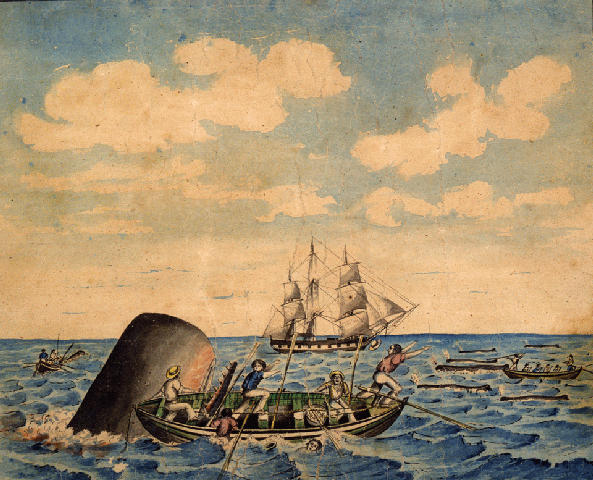What do 19th century whalers and 21st century college students have in common?
A boatload of similar instincts at deciding when stuff that’s just stuff shifts into becoming the things that we all think of as property, according to recent research by Bart Wilson, Ph.D., a professor in Chapman University’s Economic Science Institute.
Curious about how concepts of ownership and property rules spark to life, Dr. Wilson started thinking about the self-regulating instincts of early whalers, who were fairly adept at working a shared hunting territory. So he created a laboratory experiment replicating the old whaling environment. Land-lubbing students sat in a lab playing a simple game that challenged them to hunt and collect circles for profit. No rules were given.
So what happened? The dot-hunting students naturally developed among themselves the same rules of pursuit and possession that evolved amid whalers of yore. The paper describing the research, “The Ecological and Civil Mainsprings of Property: An Experimental Economic History of Whalers’ Rules of Capture,” was published in the Oxford University Press Journal of Law, Economics, and Organization. The paper was just awarded the journal’s 2012 Oliver E. Williamson Prize for Best Article.

Dr. Wilson says it’s evidence that humans are innately swift at creating rules about how things evolve to “mine and thine,” be it whales on the high seas or circles in a video game. More important, though, the findings suggest that humans have an innate interest in building relationships and avoiding expensive conflict, Dr. Wilson says. He suggests that the findings may also offer insights into how creative arts industries might navigate the tumultuous seas of today’s information era, where intellectual property rights are increasingly challenged, he says.
“If I want to make it more modern, I can apply it to intellectual property. Intellectual property is one of these big hot topics now, and we don’t know what the customary thinking of this is from the ground,” he says.
In their day, whalers had to self-monitor. Far from the courts that might have shaped their industry, they became keen negotiators of shared territory. They essentially followed a playground-like law for many years – the ship that landed a harpoon in a whale “owned” the whale. Whale slips away? It’s fair game. The rule was labeled “fast fish, loose fish.”
That was adequate for chasing the slow-moving right whales that dominated early whaling, but when whalers turned to the faster, dangerous and deep-diving sperm whales prevalent in North America, more nuanced rules evolved. The capture of sperm whales was riskier and costlier. For sperm whales, the whalers attached a drogue (to make the whales more buoyant) to the harpoon, which could serve as a marker of its owner as long as the ship was in hot pursuit. So even if the harpooned whale broke away, the ship that had landed the harpoon was understood to be well vested in the hunt and so “owned” the whale and the right of pursuit. The new rule was called “iron holds the whale.”
In the lab, similar rules naturally developed among students competing to gather moving circles in the video game. When the circles were slow and easy to collect, students adhered to the “fast fish, loose fish” rule. When the circles sped up and gamers had to buy more expensive tools to catch them, the “iron holds the whale” rule emerged.
“The big point of this is that you can’t understand property as one shoe fits all,” Dr. Wilson says. “It depends on the things, the place and as one philosopher put it, ‘The tempers of men.’ You can’t control for that.”
But when it comes to that business of intellectual property rights in an information revolution, it’s still going to be a whale of a struggle.
“The lines are not so clear,” he says.





Congratulations, Bart! We need to read Moby Dick. Talk about the “tempers of men.”
Congratulations, Bart! Maybe we can pair this with Moby Dick. Talk about “the tempers of men.”